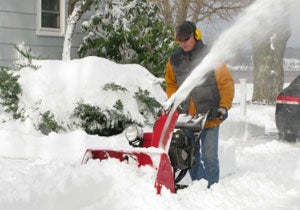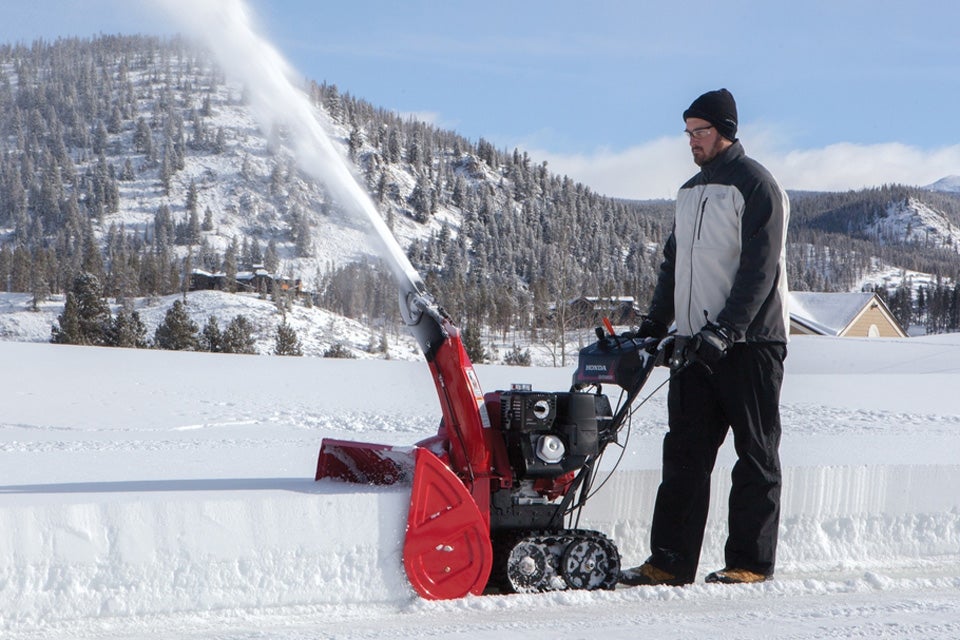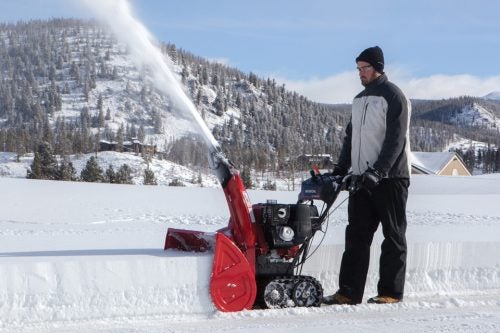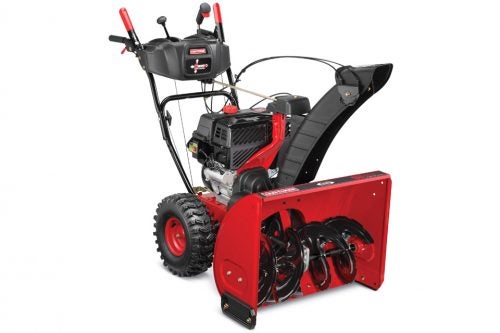When you were a kid, didn’t you love the look of falling snow – the pure, fresh landscape and thoughts of sledding, building snowmen and forts? Now all you can think about is how long it will take you to shovel the driveway, and whether you will have to start all over again as soon as you are done. Perhaps it’s time to for you to buy a snowblower. Before rushing out the door you should make a few considerations so you can ensure you get the best machine for your needs. But where do you start?
Decision One: Size and Strength
You first need to figure out how big of a snowblower you need which is dependent on the area you want to clear and how much snow you get in an average snowfall. For a short driveway and minimal snow falls (less than 8 inches per dump) a single-stage snowblower should suit you fine. However, if you get deep snow or have to clear a large area then a dual-stage snowblower would be a better choice, as it will work harder in heavy snow to get the job done.
Decision Two: The Noise Factor

How much noise can you (and your neighbors) tolerate while you clear your yard? Gas-powered snowblowers are noisier than electric models, and dual-stage units are nosier than single-stage ones. You can usually find out how noisy a snowblower is by checking the box – look for a decibel level rating. Then decide whether a powerful, noisy snowblower is better than a quieter, less robust model.
Decision Three: Weight
Many people who are elderly or have disabilities decide to buy a snowblower so they can clear their walkways themselves, only to find that they can’t handle the machine. Dual-stage, gas blowers can weigh up to 300 lbs. and although they usually have a motor that drives the wheels, you’ll still find that a significant amount of physical effort is needed to get the machine where you want it to go. Lighter electric or single-stage models may be easier to handle but make sure that they can handle your snow load first.
Decision Four: Surface Composition
It is important to consider what is going to be under the snow you are clearing – grass, concrete, gravel, etc. Single-stage models are built to scoop and blow – meaning if you have a gravel driveway you’ll end up firing rocks all over the place. A dual-stage snowblower has an auger that can be set to different heights, so you can avoid rock-throwing, which you neighbors will undoubtedly appreciate.
Decision Five: Fuel
Generally the gas-fuelled blowers are more powerful, but also heavier. They also give you better range so they’re good for larger areas – such as acreages or long driveways. However, electric models are lighter, and you don’t have to worry about gassing them up. For lighter, smaller jobs an electric snowblower will usually do the trick; otherwise you may want to consider a gas model for bigger jobs.
Decision Six: Bells and Whistles
Some features are good to have on a snowblower while others are just window dressing. It’s good to have a few speed options so your blower can go slower through heavy snow, but you really don’t need more than five or six speeds. Headlights are a definite plus for early morning and late evening clearing, and you want to make sure that your snowblower is easy to start. It’s also good to choose a model with a dead-man control which stops the auger from spinning when you let go of the handle – just in case.
Final Thoughts
If you are able, see if you can test drive a few of your neighbor’s machines before you buy your own. By getting a feel for single-stage versus dual-stage, and electric versus gas you will be able to make a more informed decision and ensure you get the right snowblower for your property.


